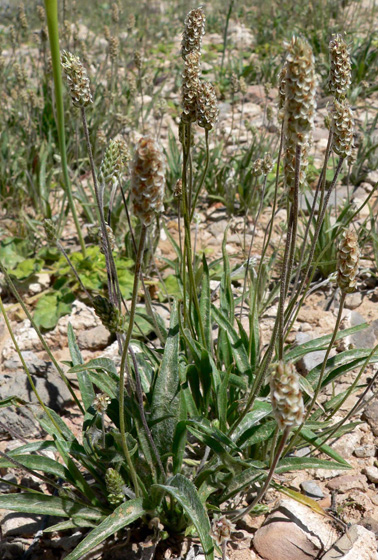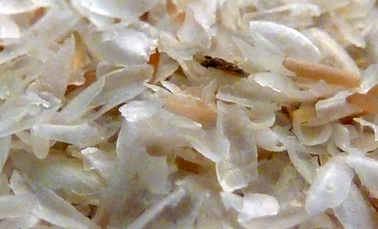|
Botanical Name:
Plantago ovata Forsk
Isapgol consists of the epidermis and collapsed adjacent
layers removed from the seeds of Plantago ovata Forsk,
Family Plantaginaceae
Common Name(s) in English & Indian Languages
Sanskrit: Asvagola, Asvakarna, Isadgola, Ishadgol,
Ishadgola, Isvarabola, Shlakshnajira
English: Indian Plantain, Isphagul, Psyllium
Guajarati: Isabagola
Hindi: Isabghul, Isabgol, Isapghul
Kannada: Esabakolu, Esabgolu
Malayalam: Ispaghal, Karkatasringi, Snigddhajirakam
Marathi: Isabagola
Tamil: Aliyakocam, Aliyakocavirai, Capja, Icapkol
Telugu: Isapagala, Isapagalavittulu
Urdu: Ispaghul Musallam, Subus Isapghol
Botanical description:
An annual, acaulescent herb. Stem highly ramified bearing
linear leaves, which are lanceolate, dentate and pubescent.
Flowers white and grouped into cylindrical spikes; sepals
characterized by a distinct midrib extending from the base
to the summit; petal lobes oval with a mucronate summit.
Seeds oval, clearly carinate, 2–3 mm long, light grey-pink,
with a brown line running along their convex side
Parts used:
Dried seed coats (epidermis)
Major chemical constituent
The major constituent is a mucilaginous hydrocolloid
(20–30%), which is a soluble polysaccharide fraction,
composed primarily of an arabinoxylan (up to 85%). The
polymer backbone is a xylan with 1→ 3 and 1→ 4 linkages with
no apparent regularity in their distribution. The
monosaccharides in this main chain are substituted on C-2 or
C-3 by l-arabinose, d-xylose, and α-d-galacturonyl-(1→2)-l-rhamnose.
Fixed oil (5–10%) is another major constituent
Therapeutic uses:
• Diarrhoea (Atisara)
• Rheumatism (Amavata)
• Gout (Vatasonita) |
|


|
|
|



